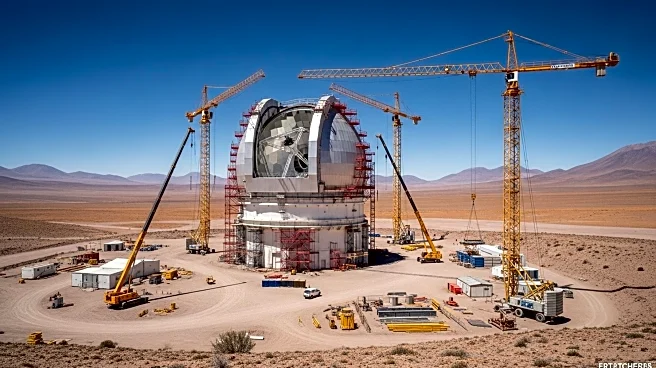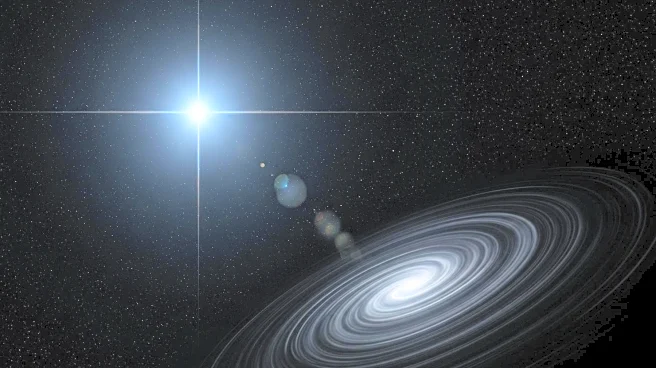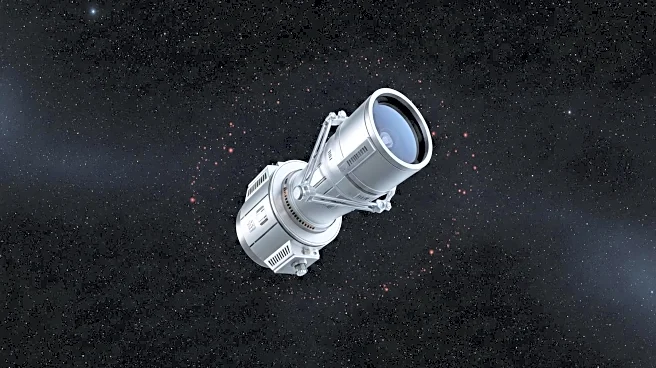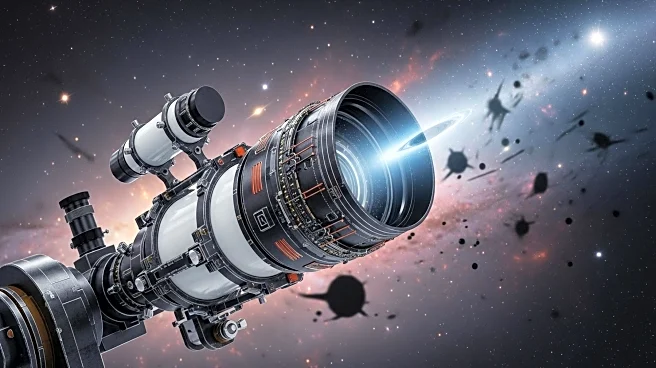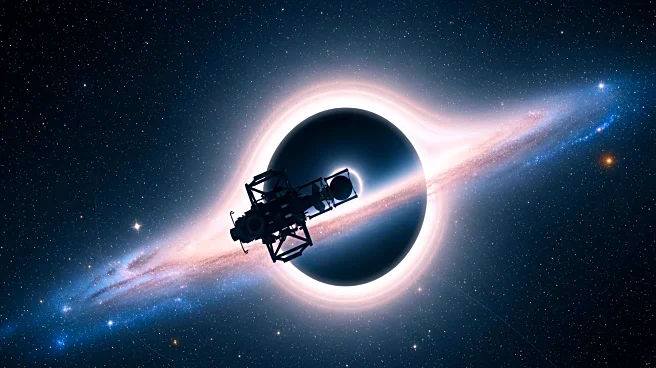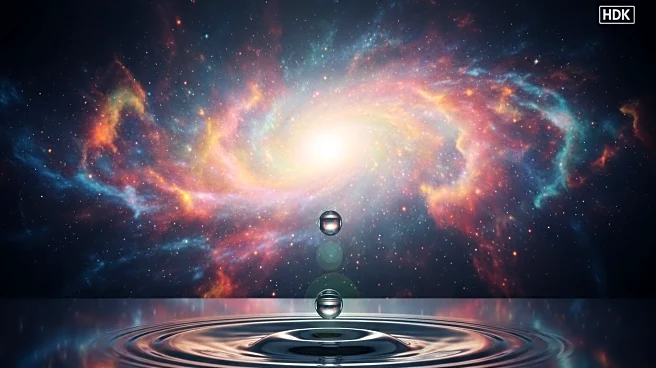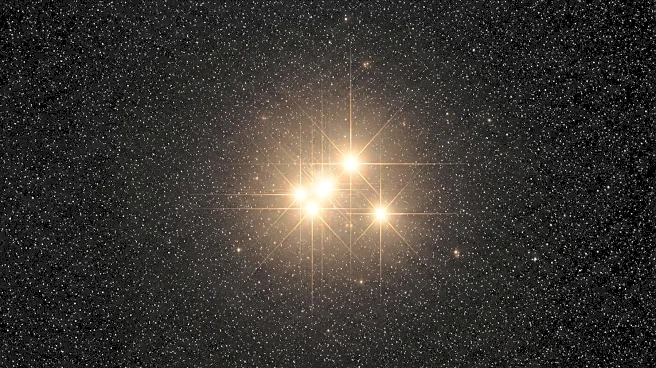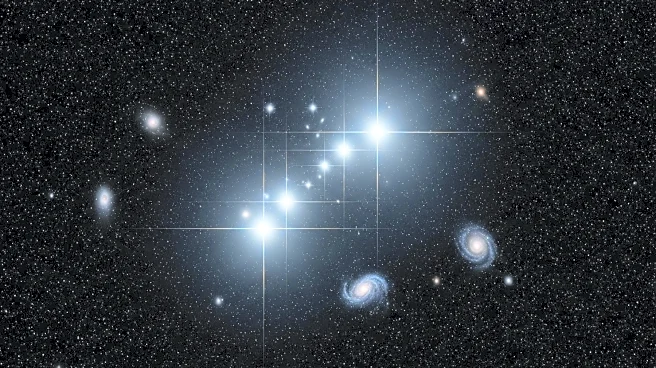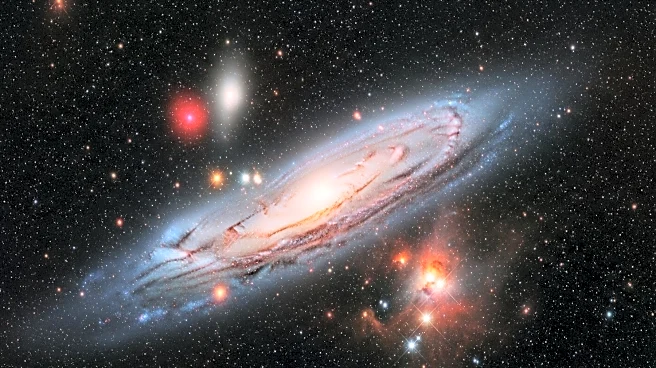What's Happening?
Recent research suggests that the 'little red dots' observed by the James Webb Space Telescope could represent a new class of cosmic objects known as 'black hole stars.' These hypothetical entities might explain the rapid growth of supermassive black holes in the early universe. The theory posits that these dots are not galaxies but massive star-like structures formed around central black holes. This concept challenges previous assumptions about galaxy formation and could provide insights into how supermassive black holes developed so quickly after the Big Bang.
Why It's Important?
Understanding the nature of these 'little red dots' could significantly impact our knowledge of cosmic evolution and the formation of supermassive black holes. If these objects are indeed black hole stars, it would suggest a new mechanism for black hole growth, potentially altering existing models of galaxy formation. This discovery could lead to a reevaluation of how we understand the early universe and the processes that led to the formation of the large-scale structures we observe today.
What's Next?
Further observations and modeling are required to test the hypothesis that these 'little red dots' are black hole stars. The James Webb Space Telescope will continue to investigate these objects to confirm their nature. If validated, this theory could open new avenues of research into the early universe and the role of black holes in cosmic evolution.

